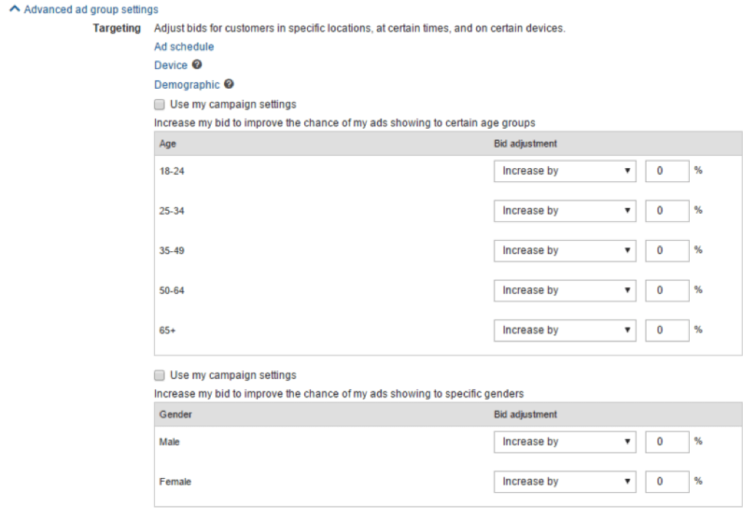I think we can all agree that 2016 has left its mark as another year of overwhelming growth in search. It continues to impart our lives with more answers, more intelligence and more value. Let’s go through some of the highlights from Bing Ads as we move forward and build on our knowledge in 2017.
New and Significant in 2016
Each year, Bing Ads, like many other platforms, release hundreds of feature advancements and new features. It can be difficult to keep up with all the betas, updates and feature releases that roll out every quarter, so here are the top few releases in 2016 that you’ll want to make sure you didn’t miss.
Editor for Mac
How could I not start with this? After much input and anticipation, Bing Ads Editor for Mac beta arrived in June to delight users of many users that have been asking for it for years. It included with high-speed advancements and ease of use. Just like Bing Ads Editor 11, it included bulk edits, managing multiple accounts at the same time and copy/pasting across multiple accounts.
Bing Shopping Campaigns in Editor
Before this update managing Bing Shopping Campaigns directly from the UI was not that easy to do. In September, Bing Ads released Bing Shopping Campaigns integration into Bing Ads Editor, allowing users to create, update or delete Shopping Campaigns right in the editor as well as providing a Google import option.
Shared Budgets
Advertisers know the pain of manually updating individual campaign budgets, which often result in underutilized budgets. In October, Bing Ads announced Shared Budgets, which automatically distributes a single daily budget across all campaigns or a subgroup of campaigns opted into the shared budget. Now, we can enjoy further streamlined budgeting without the hassle of constant altering and recalculating.
Expanded Text Ads
On the tails of Google Adwords and in an effort to standardize ad formats to work across mobile, tablet and desktop devices, Bing launched an Expanded Text Ads pilot in August. Like Google, titles jumped from 25 to 60 characters, while descriptions increased from 71 to 80. This extra space gives users a way to create more compelling calls to action and drive higher conversions.
Broad Match Modifier opportunities
We’ve heard our users express interest in expanding their reach and getting more volume. Broad Match Modifier (BMM) is Bing’s answer to delivers relevant traffic with more precision than broad match alone. It leverages marketplace intelligence to suggest the most optimal BMM keywords for your campaign.
Now with the top 2016 updates out of the way we can move on to how we can shape up our account for 2017!
The end of the calendar year is a great time to audit and review your current account activity, making sure it is in line with industry best practices and account goals. There are a lot of different ways to do this from spot-checking settings to reviewing Search Term reports.
One thing that can make a big impact, but not take up all of your time, is running a few reports available within the interface to make sure your accounts are operating smoothly and efficiently.
Reports help us to organize the data in digestible formats and make sure we’re running regular checks ups across all accounts. They give you greater visibility of what’s going on in campaigns and ad groups, in turn helping us to see opportunities for growth and efficiency improvements.
Now let’s get to it! Go to the “Reports” tab within the main Bing interface. Once you’re on this page, you can select the report type out of the following options: performance, ad extensions, product ads, change history, targeting, campaign analytics, billing and budget.
You can also add in additional levels of segmentation like time period, campaigns and which metrics to include. You can even set up automatic reports that will be emailed directly to you, if you want to view the same report on a regular basis. This is a great time-saver to avoid having to manually build similar reports each time you want to review similar data.
Website URL (Publisher) report
This is a helpful feature that isn’t currently available in AdWords (what?!). It allows us to see which syndicated partners our ads are appearing on and how they are performing.
Following this, you can then make adjustments to improve campaign efficiency by excluding poorly performing partner URLs at campaign level once you have analyzed the data.
Negative Keyword Conflict report
You should have negative keyword lists set up across your PPC campaigns and often check through Search Term reports to find new ones to add in. But how often do you keep an eye on any negative keyword conflicts that may crop up? Probably not as much as you should. Using the Negative Keyword Conflict report is a great way to fit this into your regular account checks.
By running this report, Bing will tell you the negative keywords you currently have in your account that are preventing your ads showing for keywords that you currently have live.
You can then remove these manually in Bing and make sure you’re not blocking your ads from showing to a relevant searcher.
Share of Voice report
This is an often-unused report that helps you to visualize areas for potential campaign growth. You can confirm you’re maximizing reach across Bing by using this report in your top-performing areas.
Take a look at data for the last six months and make sure your top converting areas are hitting their maximum share of voice. You can do this by adjusting bids and targeting higher ad positions, as well as improving overall ad relevancy.
Age and Gender report
Bing allows you to make bid adjustments based on the performance of certain age segments or gender, all the way down to ad group level.
In order to set these up, downloading an Age and Gender report and pivoting the data in Excel to use calculated fields for conversion rate by age/gender segment.
You can implement ad group level age and gender bid adjustments within the Bing Ads interface. Implementing positive or negative bid adjustments for the age segments that work best, or that you know do not work well for your account, will help optimize and capitalize on the traffic you are bringing in.
2017, bring it on!




